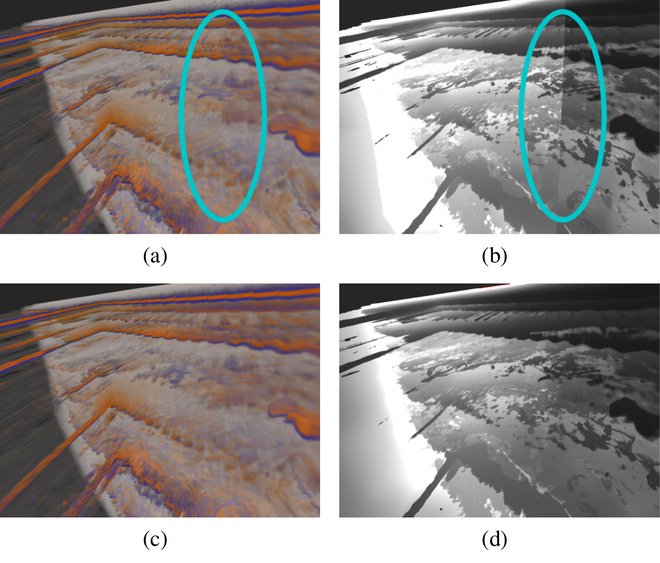Visualization of per-pixel iteration count during sampling of the seismic dataset. The state-of-the-art sampling approach without spatiotemporal blending shown in (a) and (b) requires a considerable number of sampling operations and produces salient artifacts (marked blue) on the boundaries between adjacent bricks of differing levels of detail. Our adaptive sampling solution requires fewer sampling operations (d) and and in combination with spatiotemporal blending it results in smooth transitions across brick boundaries (c). The intensity in (b) and (d) corresponds to the number of iterations where the color white indicates a number of iterations exceeding 1024.
Abstract
High-quality raycasting of multi-resolution volumetric datasets benefits from a well-informed working set selection that accounts for occlusions as well as output sensitivity. In this work, we suggest a feedback mechanism that provides a fine-grained level-of-detail selection for restricted working sets. To mitigate multi-resolution artifacts, our rendering solution combines spatial and temporal level-of-detail blending to provide smooth transitions between adjacent bricks of differing levels of detail and during working set adjustments. We also show how the sampling along rays needs to be adapted to produce a consistent result. Our implementation
demonstrates that our spatiotemporal blending in combination with consistent sampling significantly reduces visual artifacts.
Publication
Thiele, S., Matthes, C.-F., Froehlich, B.
Spatiotemporal LOD-Blending for Artifact Reduction in Multi-Resolution Volume Rendering
In: Bebis G. et al. (eds) Advances in Visual Computing. ISVC 2016. Lecture Notes in Computer Science, vol 10072, pp. 449-461. Springer, Cham
[preprint]

